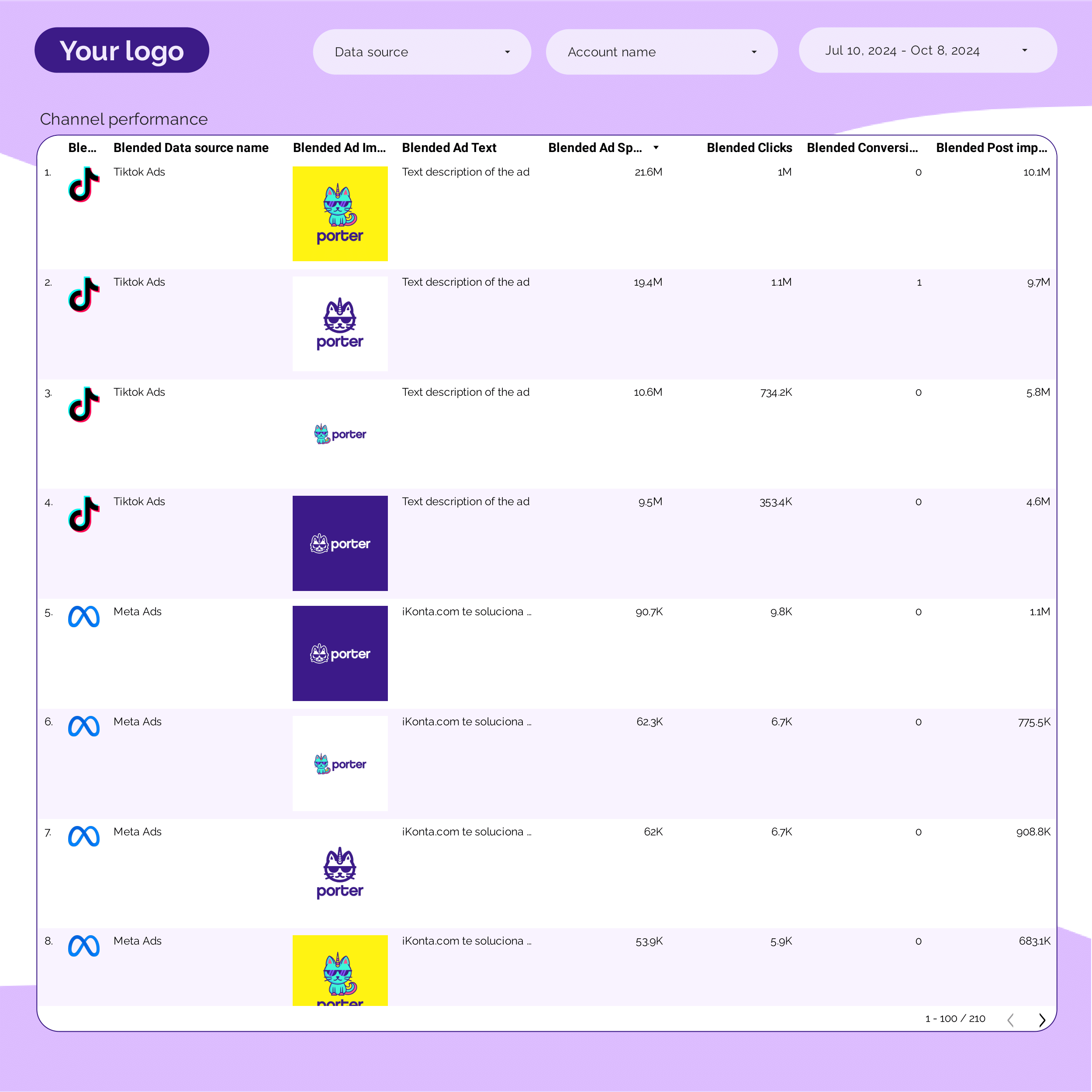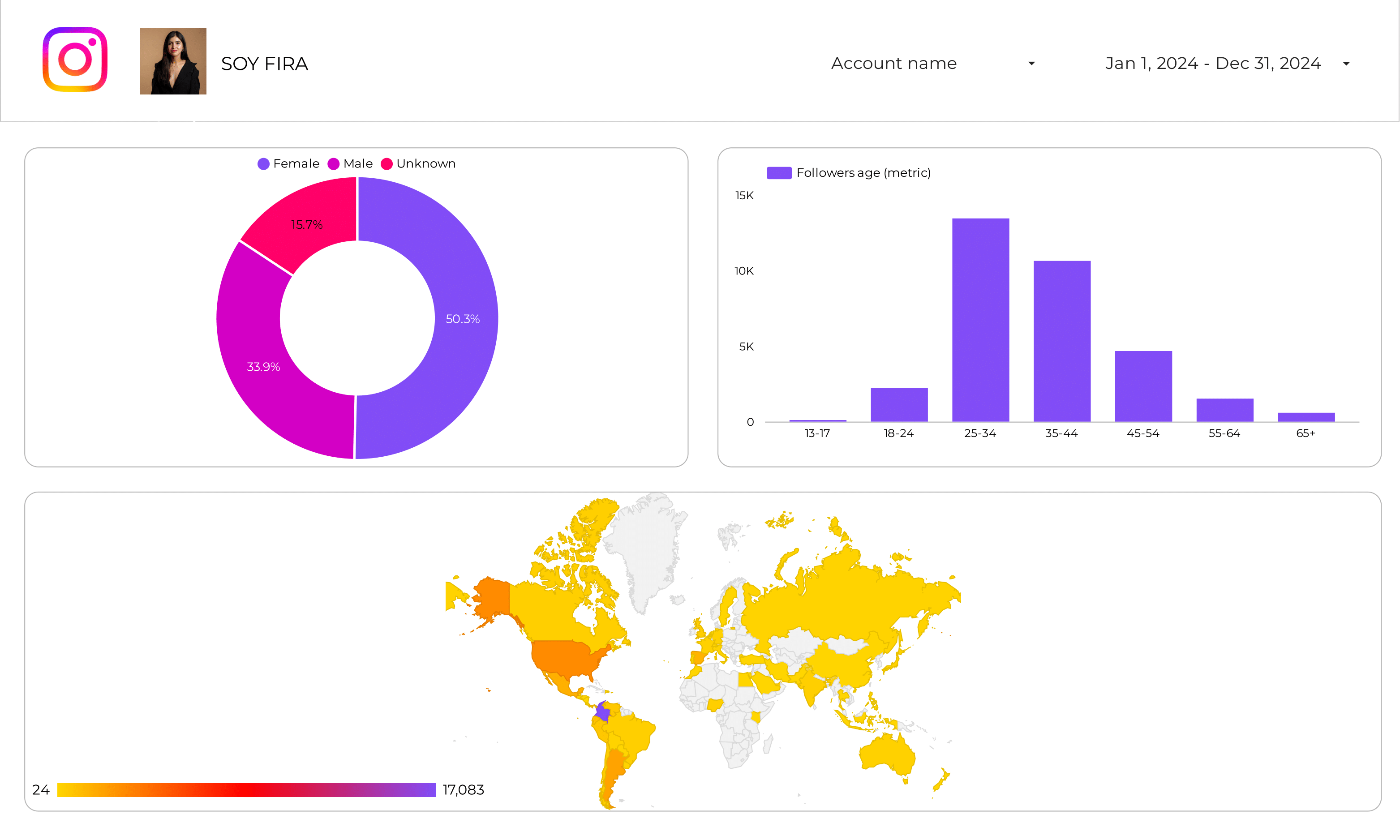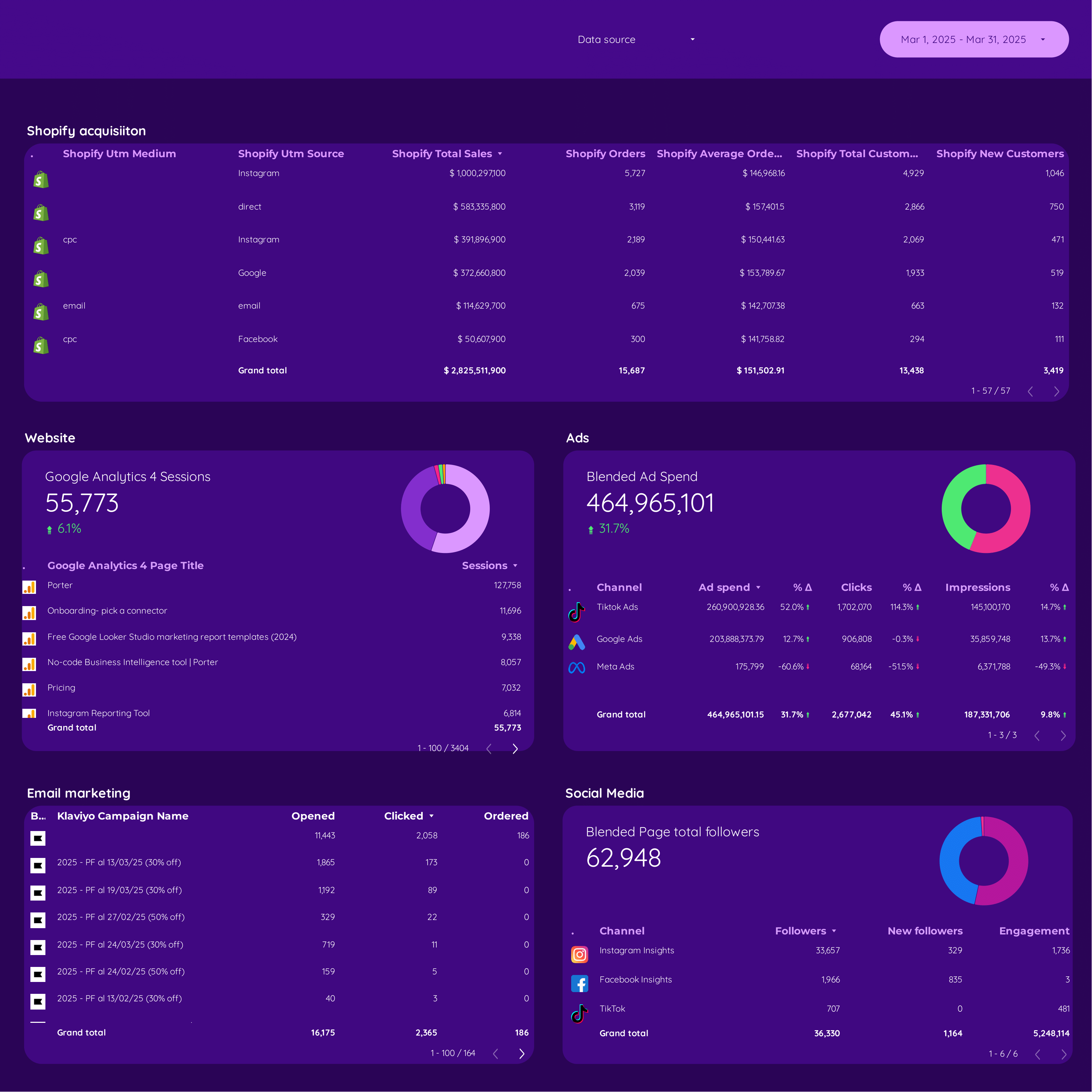
DTC Report template for Marketing teams and agencies
Optimize your strategy with this DTC report template. Track revenue, conversion rates, and cost per acquisition. Blend data from E-commerce, Google Analytics 4, Shopify, Google Ads, and Facebook Ads. Segment by demographics, behavior, and time. Perfect for marketing teams to measure key metrics and enhance E-commerce performance.
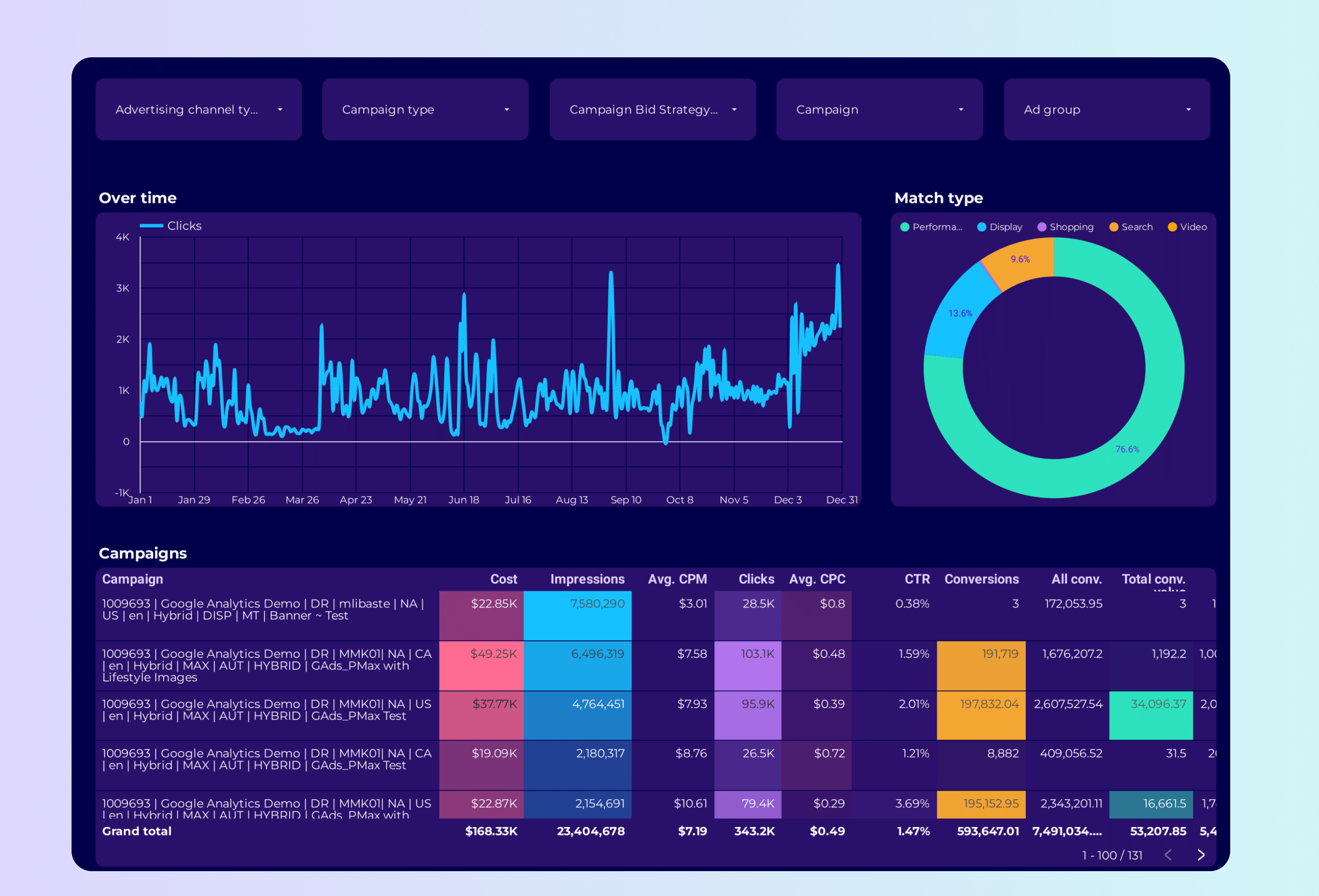
Google Ads PMax Report template for Marketing teams and agencies
Track key metrics with this Google Ads PMax report template. Measure conversion value, CTR, and impressions. Analyze by campaign type, audience segment, and time period. Consolidate data from Google Ads and Paid Media for actionable insights. Ideal for marketing teams focused on optimizing PPC performance and achieving strategic goals.
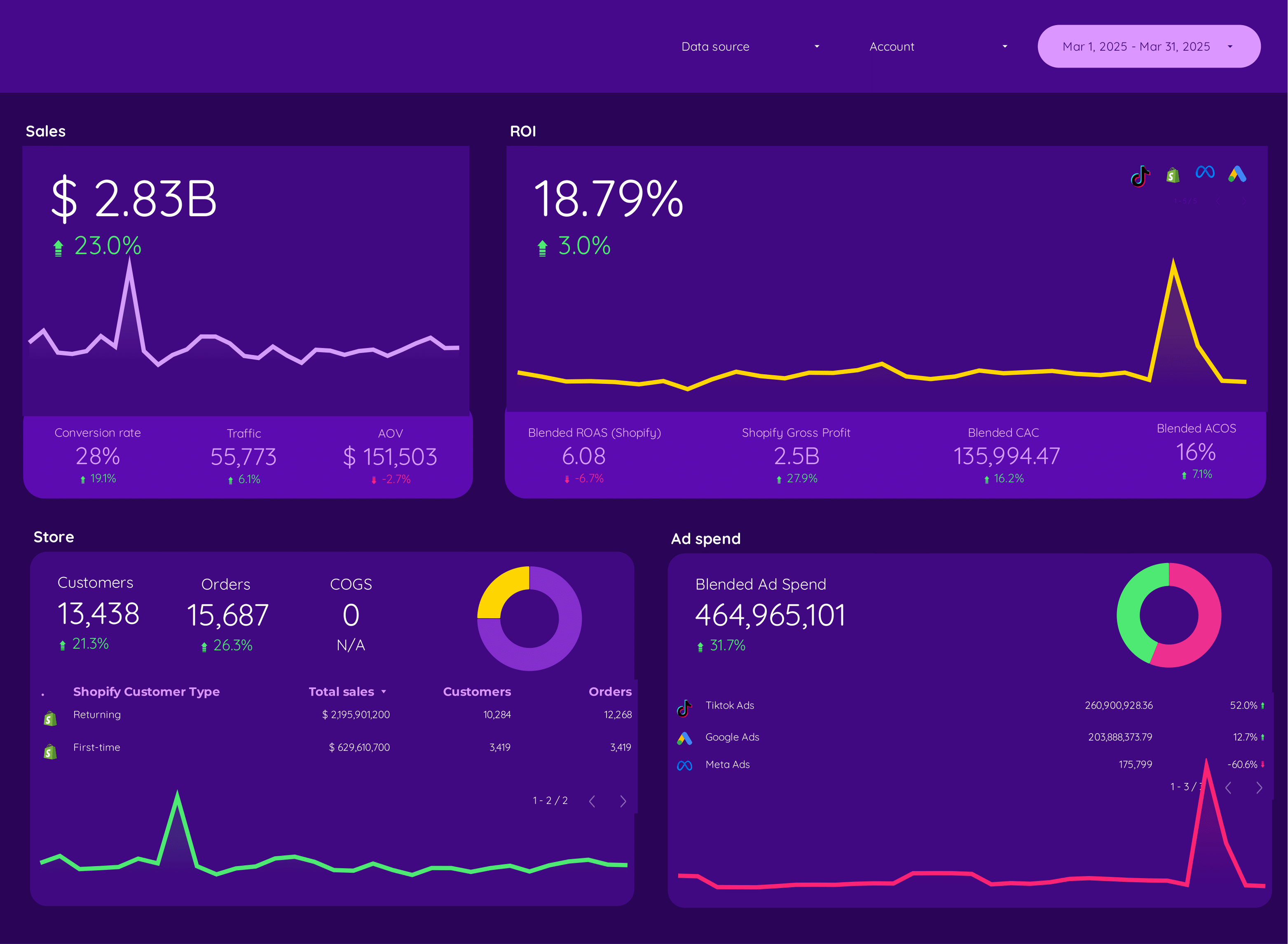
E-commerce Report template for Marketing teams and agencies
Optimize your strategy with this E-commerce report template. Track metrics like conversion rate, average order value, and CPA. Analyze dimensions by audience, channel, and time. Integrate data from E-commerce, Paid Media, and SEO. Ideal for marketing teams to measure performance and achieve goals effectively.
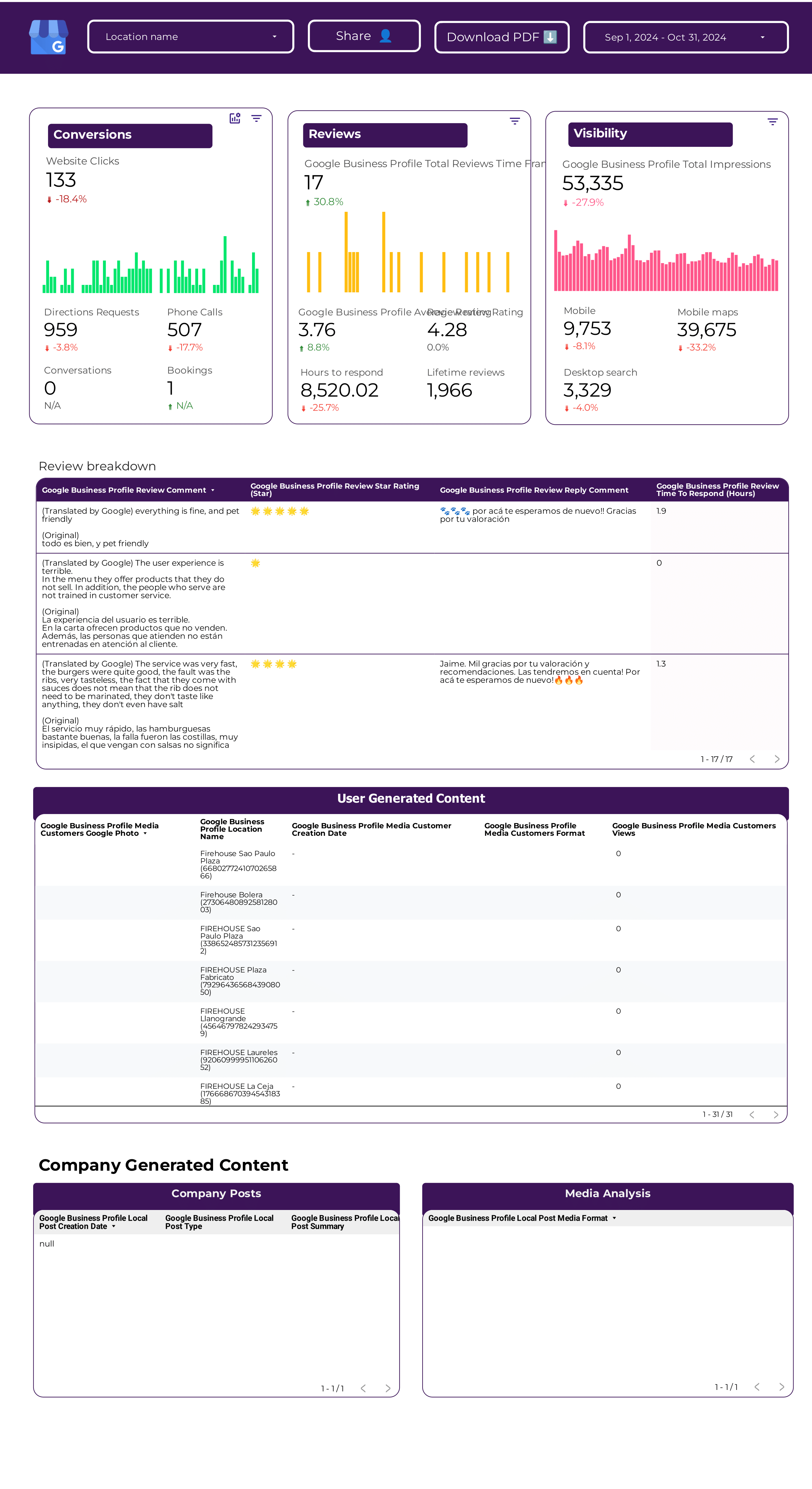
Google Business Profile Report template for Marketing teams and agencies
Optimize your local SEO strategy with this Google Business Profile report template. Track CTR, conversion rate, CAC, clicks, impressions, and reviews. Analyze data by location, age, gender, and time. Perfect for marketing teams aiming to consolidate performance insights and meet specific goals.
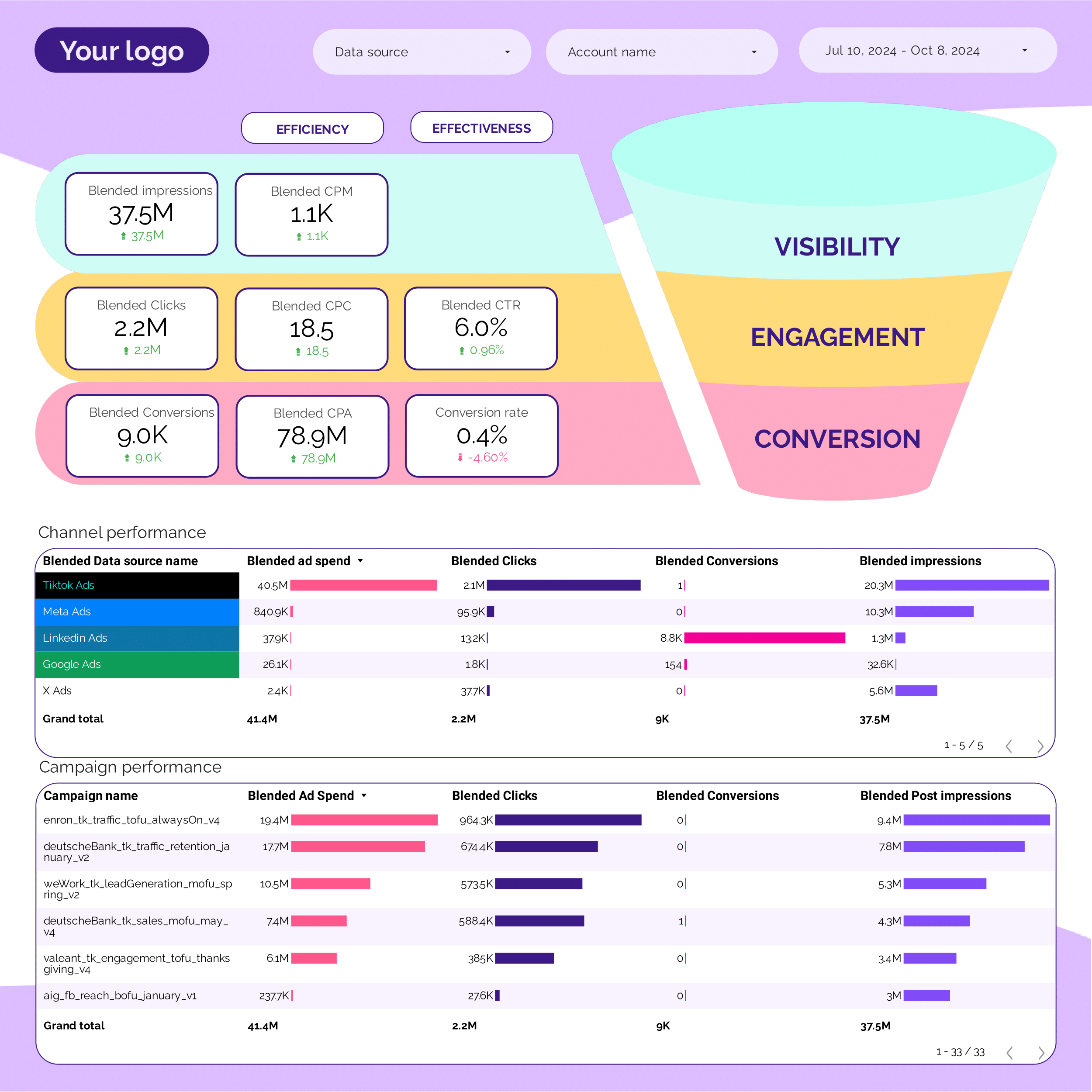
PPC Funnel Report template for Marketing teams and agencies
Get the actual PPC Funnel on Looker Studio template used by Porter to monitor PPC performance.
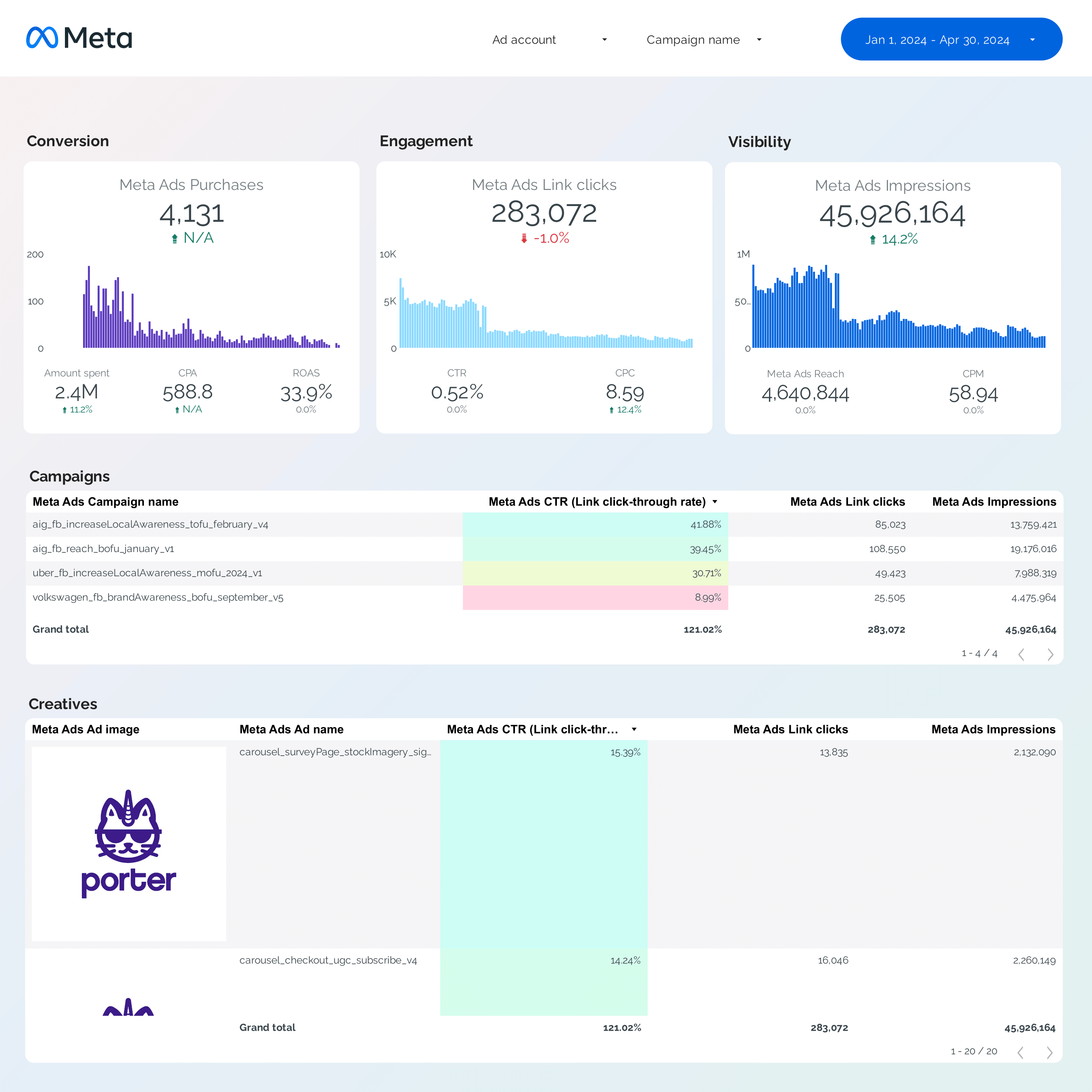
Facebook Ads Report template for Marketing teams and agencies
Optimize your Facebook Ads strategy with this report template. Track metrics like cost per conversion, ROAS, and CTR. Analyze performance by audience, placement, and time. Ideal for PPC and Paid Media teams to measure ad effectiveness across demographics and interests.
PPC KPIs Report template for Marketing teams and agencies
Get the actual PPC KPIs on Looker Studio template used by Porter to monitor PPC performance.
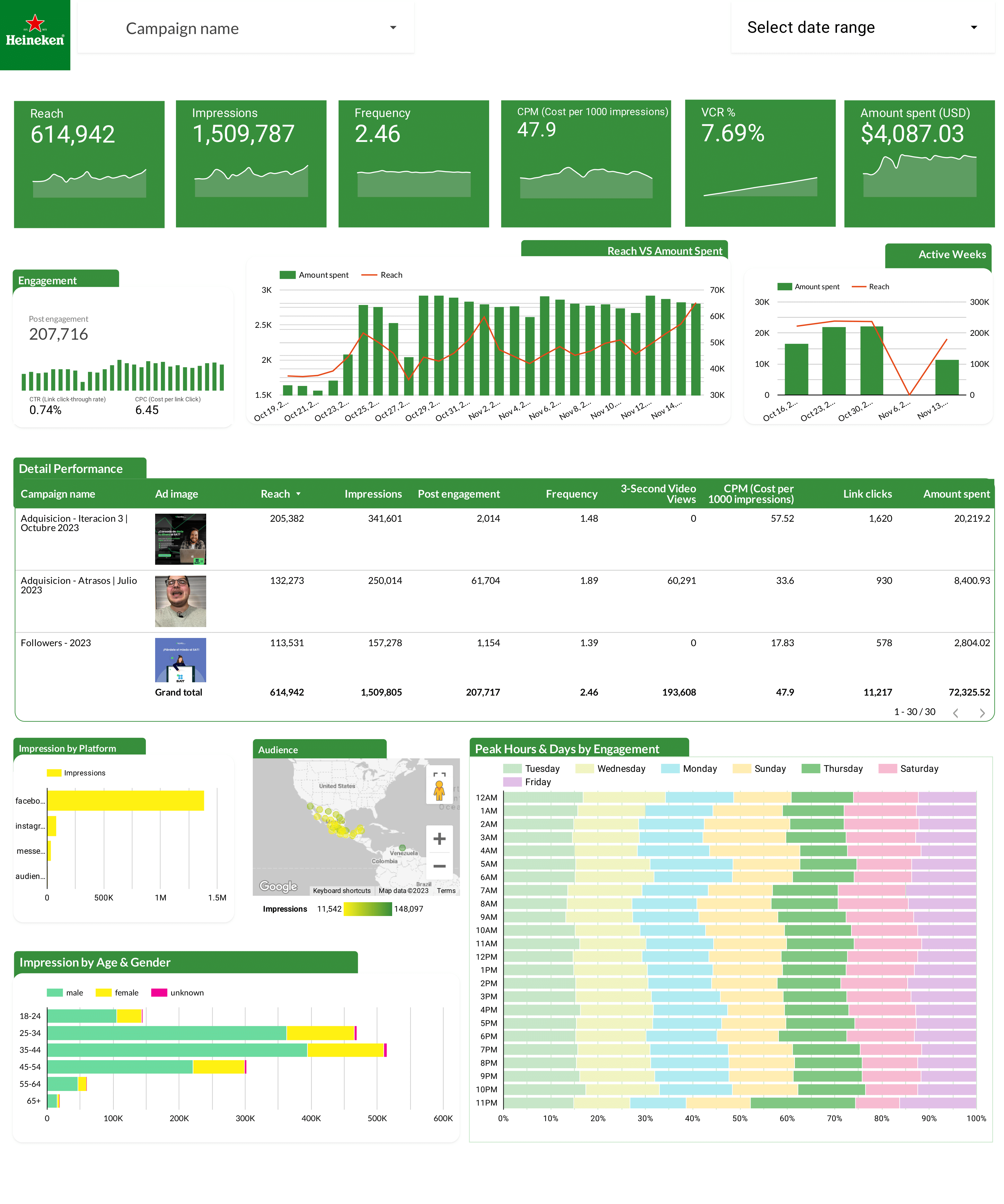
Facebook Ads Report template for Marketing teams and agencies
Optimize your Facebook Ads strategy with this report template. Measure key metrics like cost per conversion, ROAS, and CTR. Analyze performance by audience, placement, and time. Ideal for PPC specialists to track and improve paid media campaigns. Consolidate data from Facebook Ads and PPC for actionable insights.
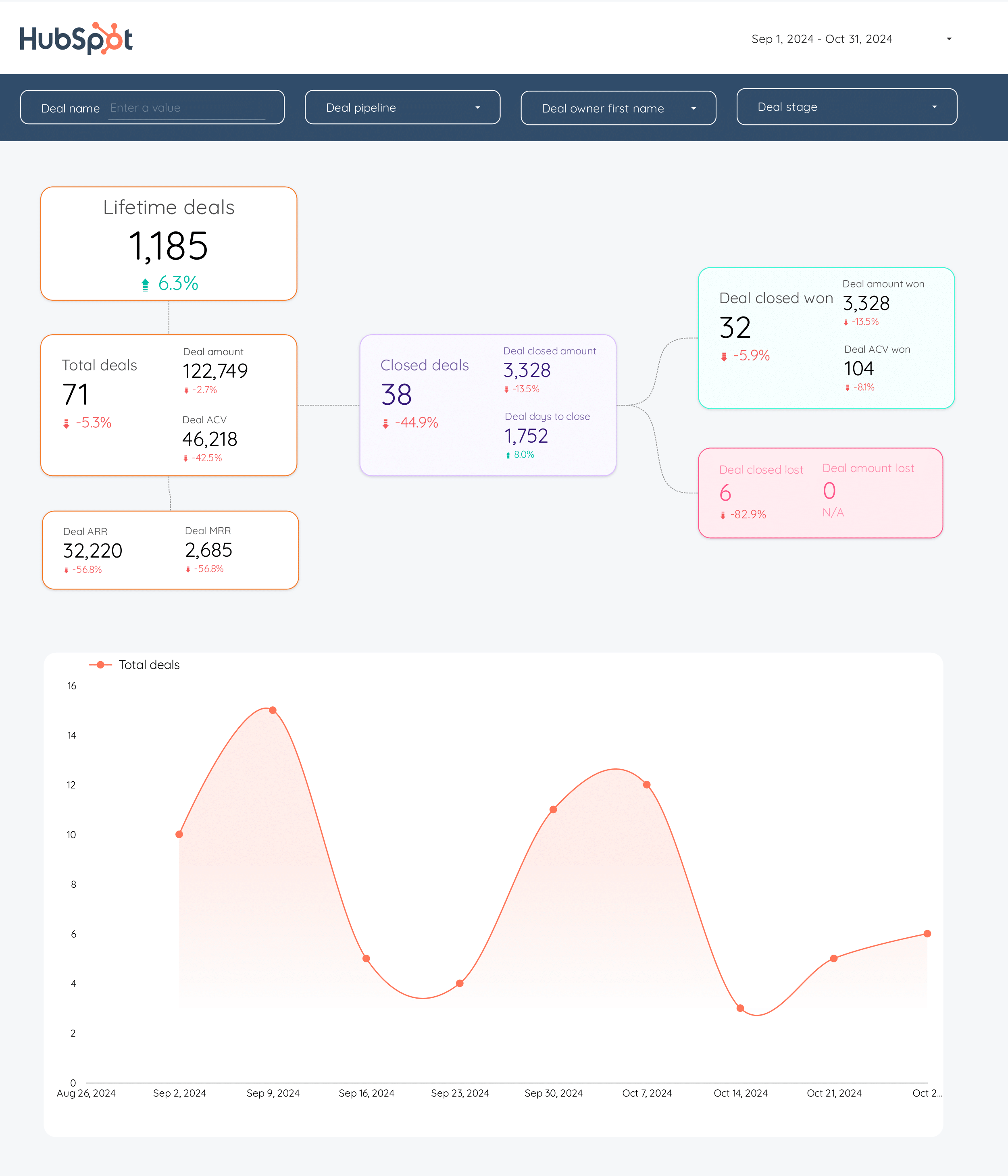
HubSpot Report template for Marketing teams and agencies
Optimize B2B marketing with this HubSpot report template. Track metrics like conversion rate, ROI, and average deal size. Analyze CRM contacts and campaign performance by demographic and psychographic breakdowns. Ideal for inbound marketing teams to measure and refine email marketing and funnel strategies across different timeframes.
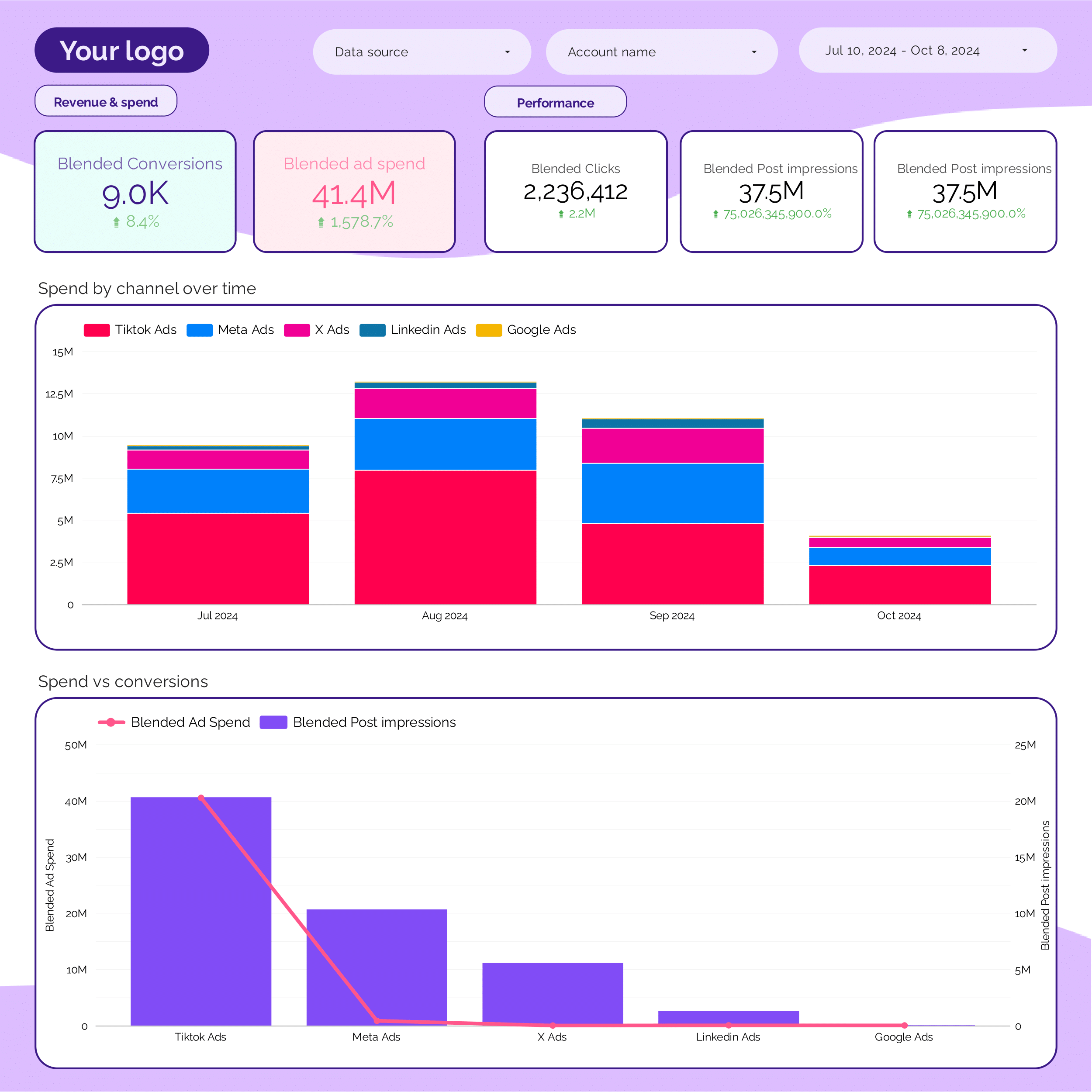
PPC monthly Report template for Marketing teams and agencies
Get the actual PPC monthly on Looker Studio template used by Porter to monitor PPC performance.
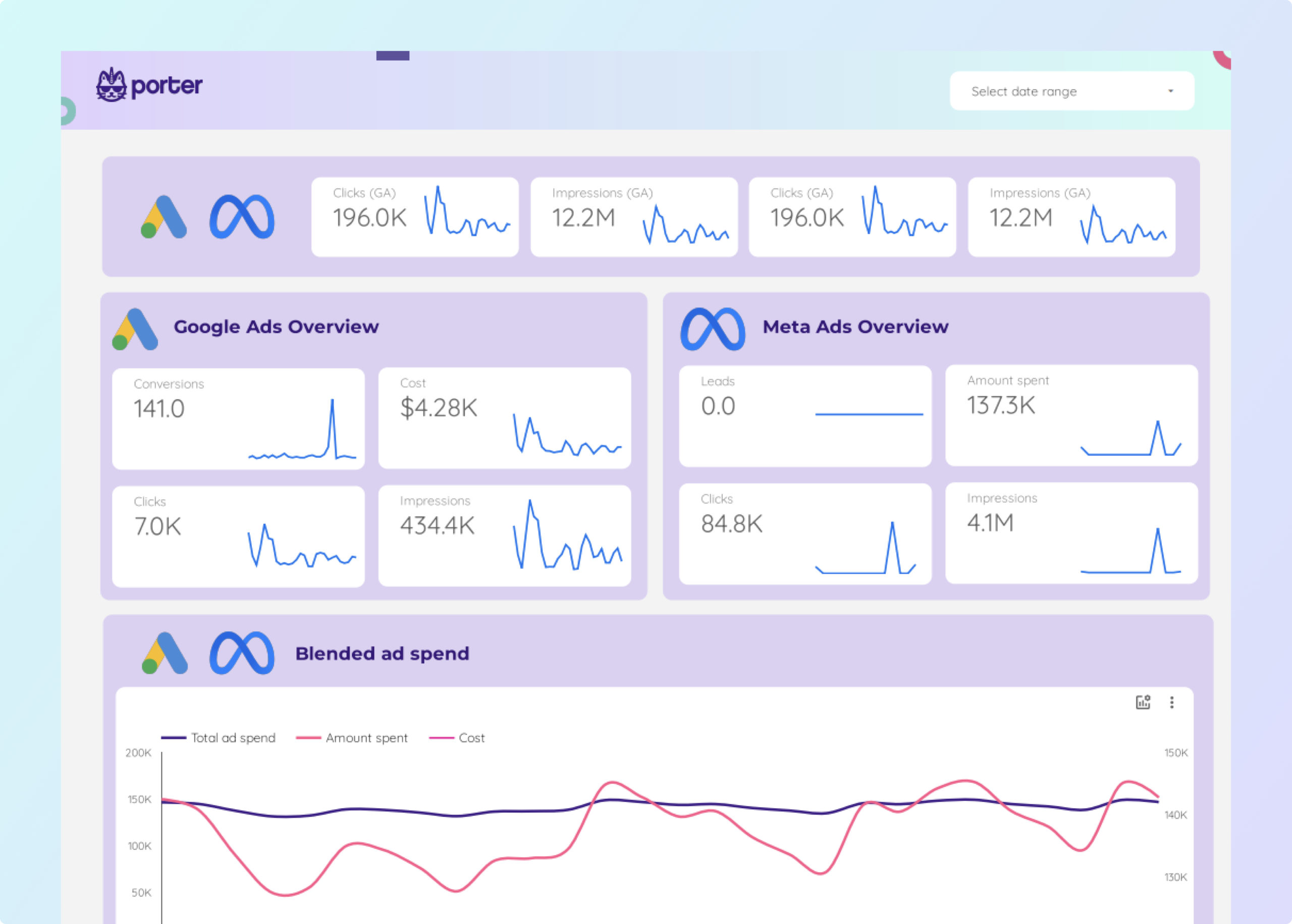
Facebook Ads + Google Ads Report template for Marketing teams and agencies
Track and analyze key metrics with the Facebook Ads + Google Ads report template. Measure conversion rates, ROI, and CTR. Segment by audience, objectives, and time. Ideal for marketing teams to consolidate insights and optimize paid media strategies. Understand demographics and consumer behavior for actionable performance insights.
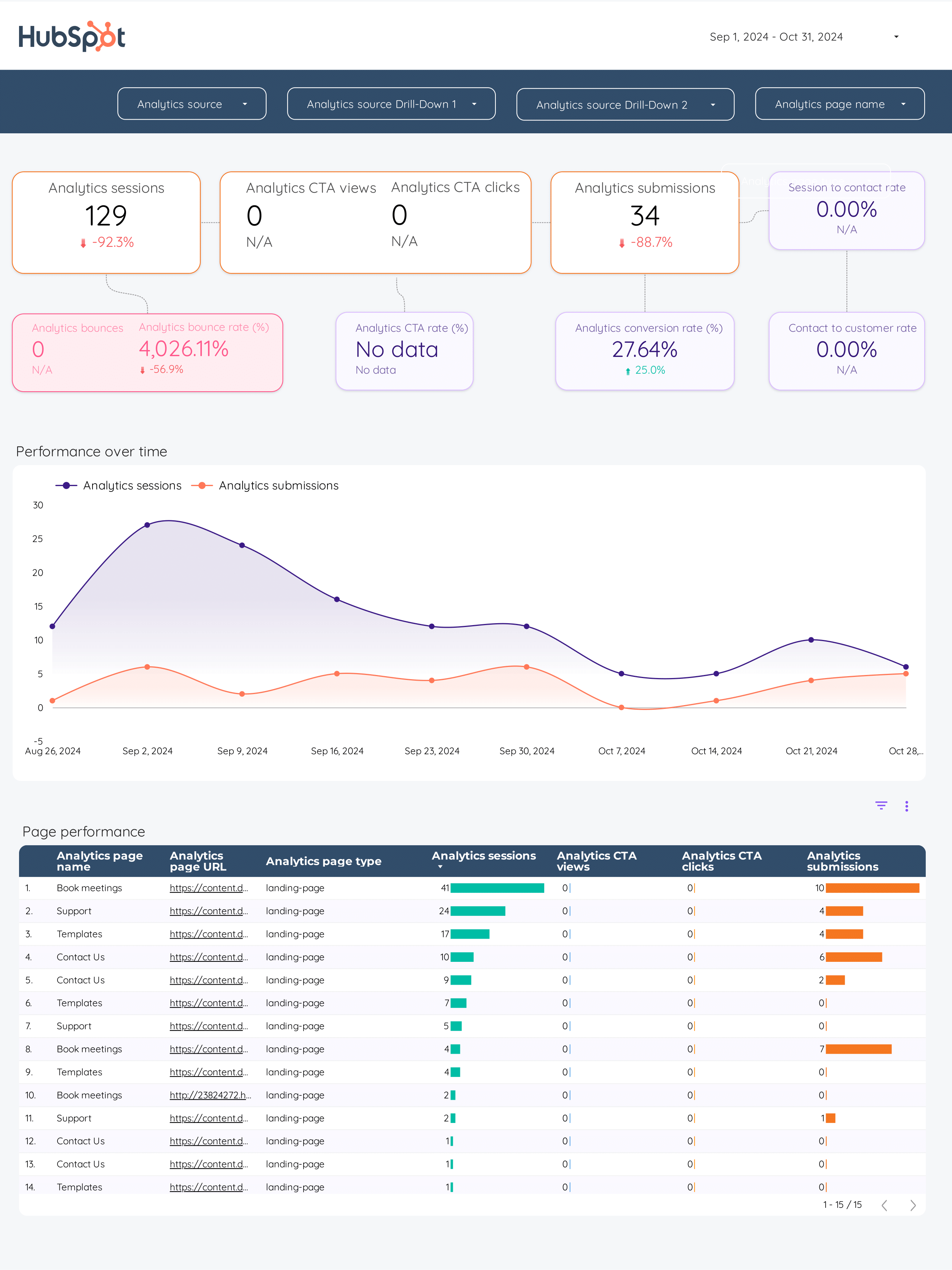
Inbound marketing Report template for Marketing teams and agencies
Optimize your strategy with this Inbound marketing report template. Track KPIs like conversion rates and social media engagement. Analyze data from CRM, E-commerce, Facebook Ads, Google Analytics 4, and LinkedIn Ads. Segment by demographics and timeframes. Ideal for B2B and e-commerce teams to measure performance and achieve marketing goals.
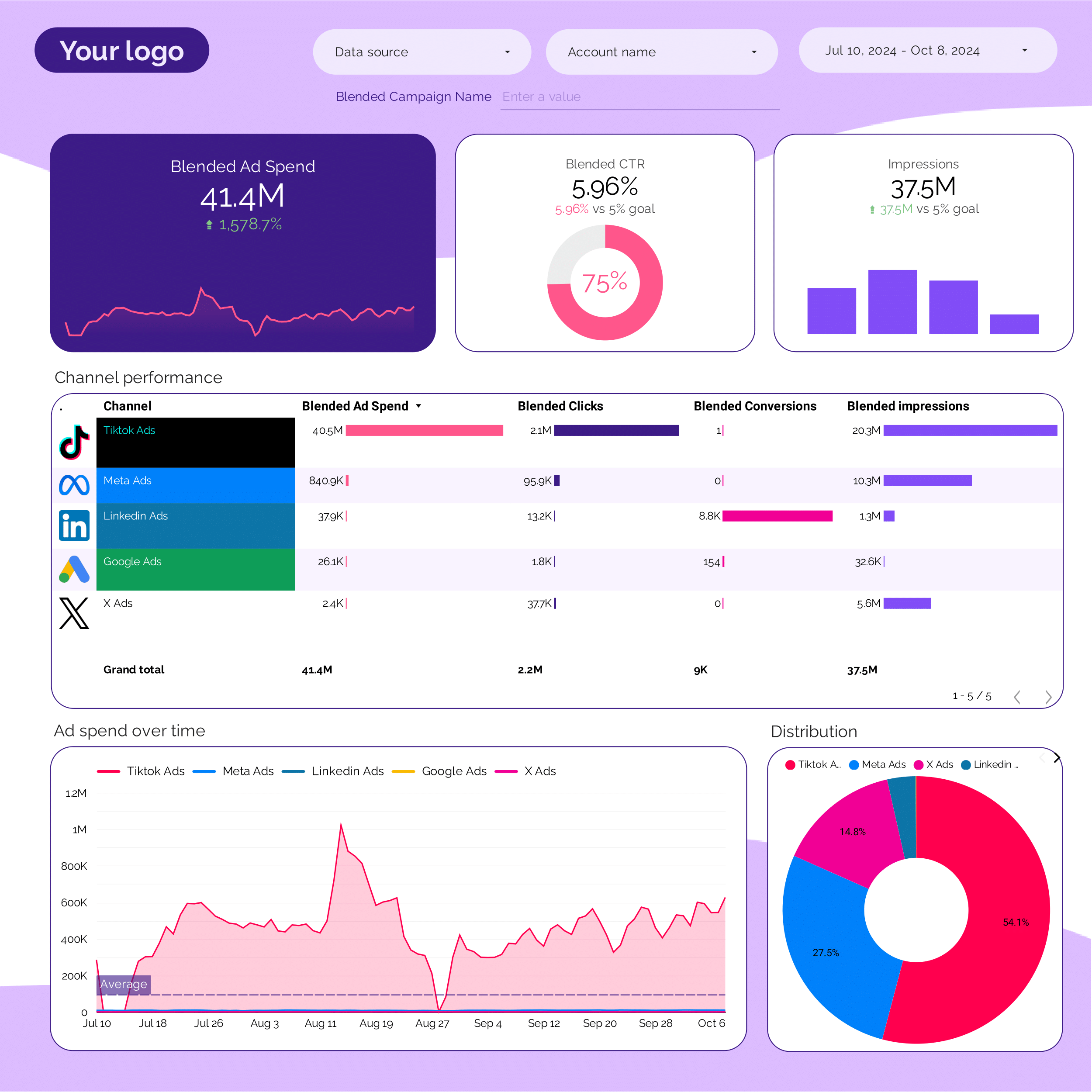
PPC multi-channel Report template for Marketing teams and agencies
Get the actual PPC multi-channel on Looker Studio template used by Porter to monitor PPC performance.
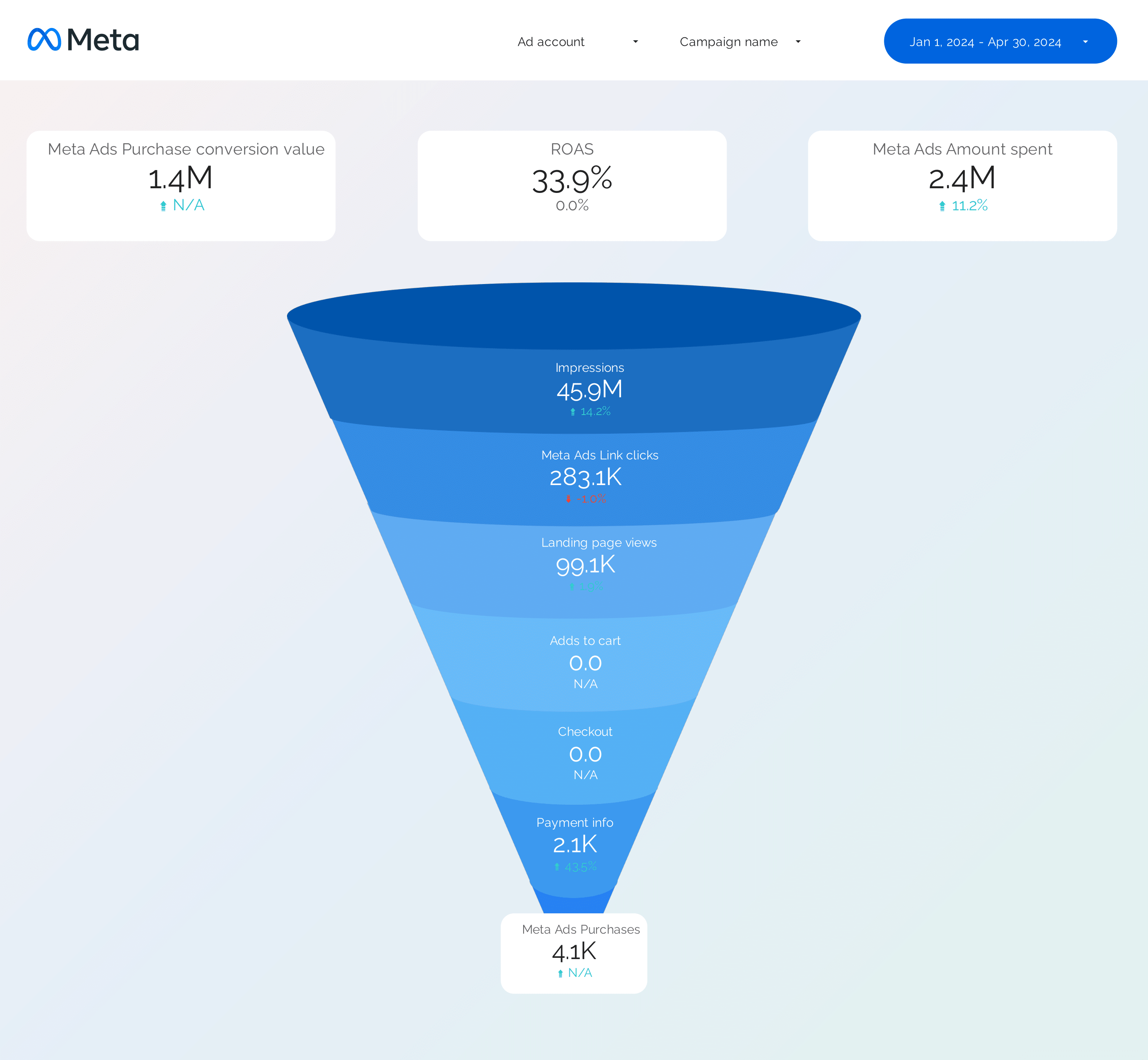
Facebook Ads Funnel Report template for Marketing teams and agencies
Optimize your Facebook Ads Funnel with this report template. Track CTR, conversion rate, CPA, and more. Analyze audience targeting, ad creative, and placement strategy. Segment by demographics and behavior. Ideal for PPC and paid media specialists to enhance campaign performance and achieve marketing objectives. Perfect for understanding reach, impressions, and organic search traffic.
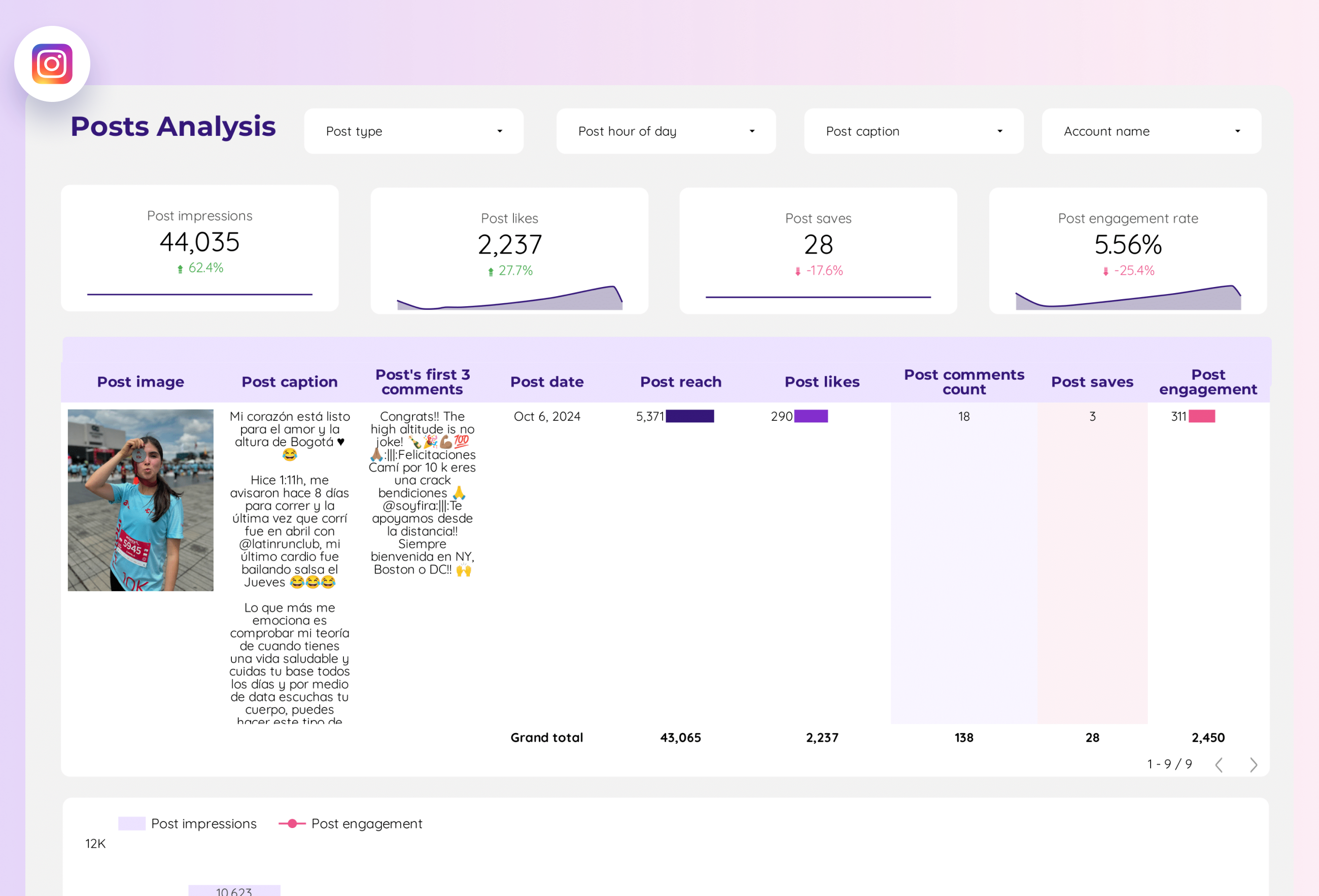
Instagram Insights Report template for Marketing teams and agencies
Analyze key metrics with the Instagram Insights report template. Measure CTR, conversion rate, ROI, likes, comments, shares, impressions, and reach. Segment by age, gender, location, and time. Ideal for social media marketers to consolidate performance data and refine strategies. Gain actionable insights to optimize engagement and ROI.
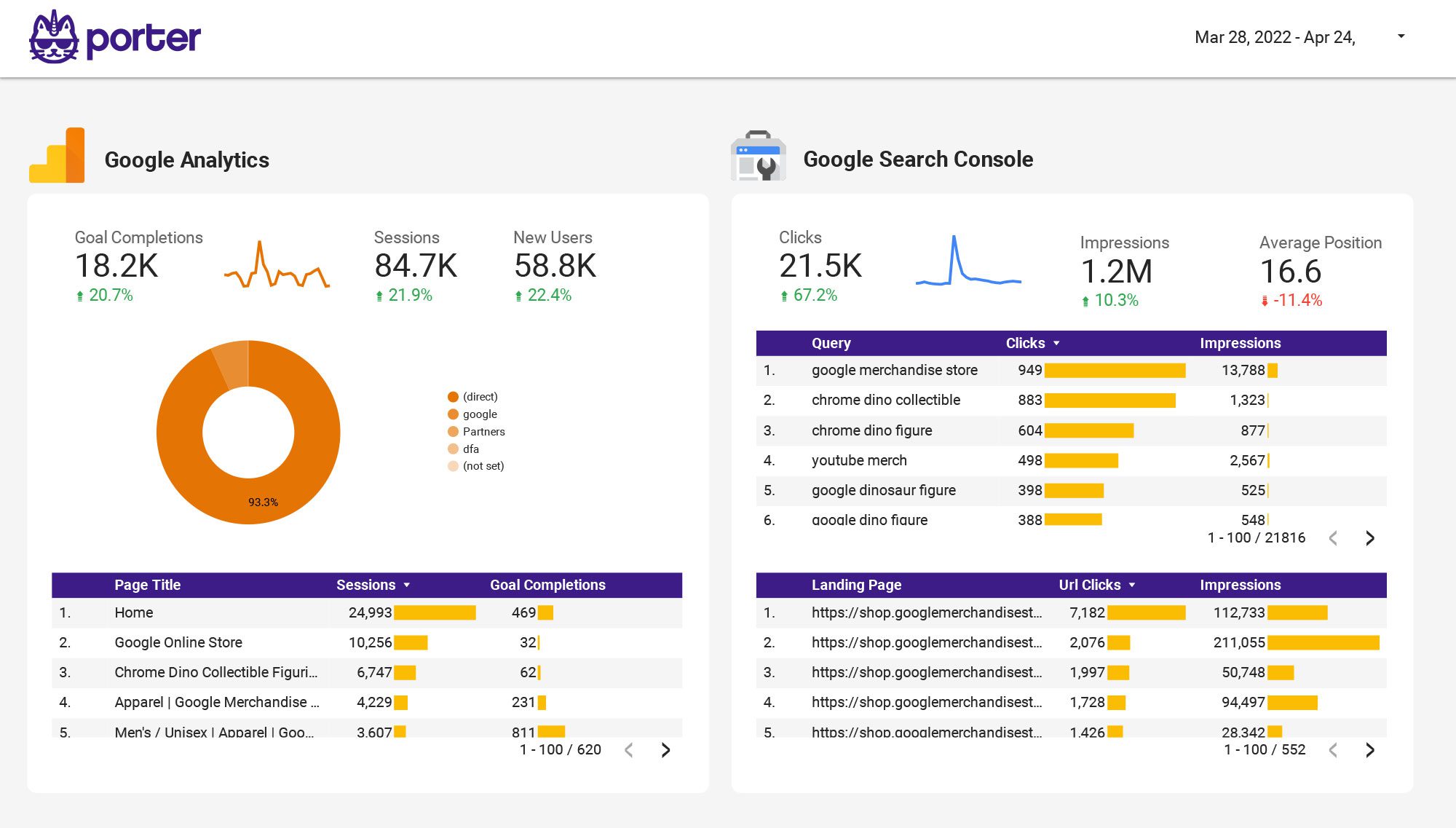
Multi-channel Marketing performance Report template for Marketing teams and agencies
Optimize your strategy with the Multi-channel Marketing performance report template. Track CTR, ROI, and engagement metrics from SEO, Google Analytics 4, Facebook Ads, Instagram Insights, and more. Analyze channel performance and customer engagement by demographics and timeframes. Perfect for marketing teams to measure and improve performance across diverse platforms.
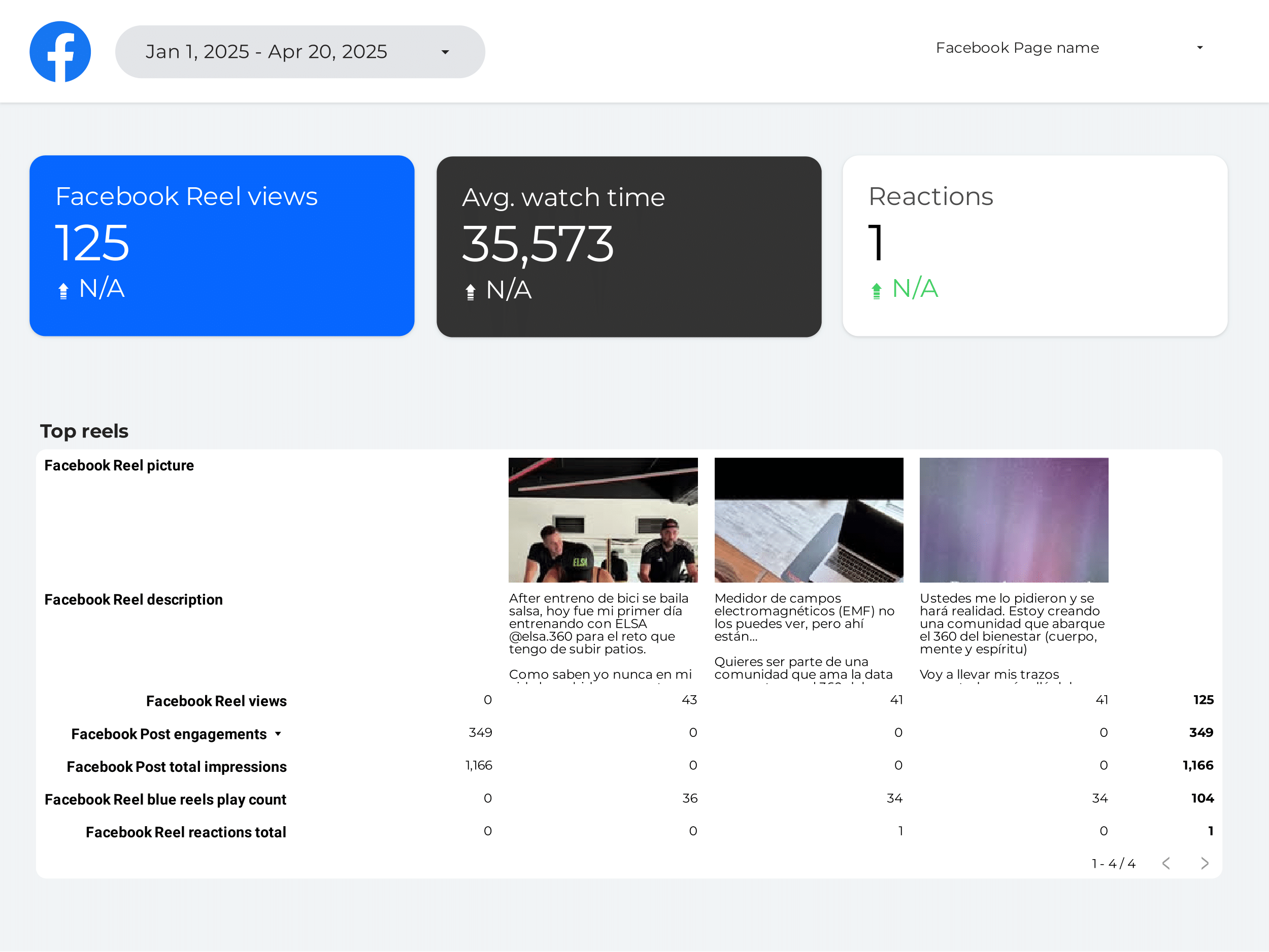
Facebook Insights Report template for Marketing teams and agencies
Optimize your social media strategy with this Facebook Insights report template. Track CTR, conversion rate, and engagement. Analyze metrics by age, gender, and location. View insights by hour, day, or month. Perfect for marketing teams to measure performance and achieve objectives.
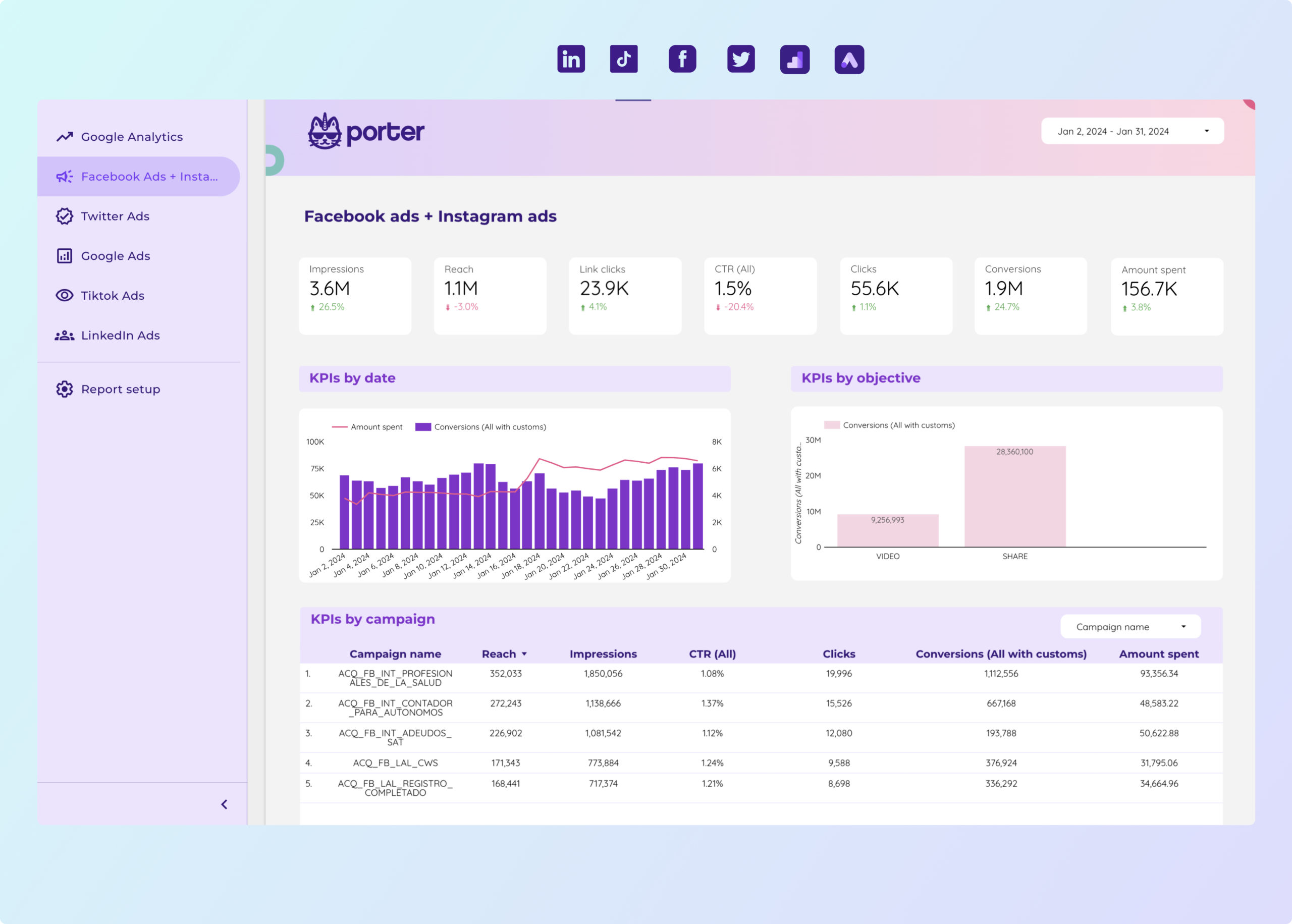
Paid media Report template for Marketing teams and agencies
Analyze key metrics like CTR, conversion rate, and CPA with this Paid media report template. Integrate data from Facebook Ads, TikTok Ads, Google Ads, and more. Segment by location, age, and interests. Ideal for PPC specialists to track performance and refine strategies across platforms using Google Analytics 4.

